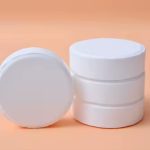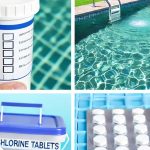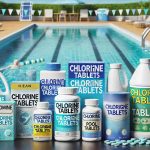In order to create a fresh and safe swimming environment, it is crucial to maintain the water quality of the swimming pool. However, in some cases, we may accidentally add too much chlorine, causing the chloride in the water to exceed the standard. Excessive chlorine content in the water will not only have adverse effects on the body but also affect the physical comfort of athletes. This article will explore what to do if you add too much chlorine to your swimming pool.

Ⅰ. Stop Adding Chlorine
Reducing the chloride in your swimming pool is as simple as stopping the addition of chlorine when the chlorine level slightly exceeds the recommended value. Turn off the chlorine supply and remove the chlorine float or tablets from the pool to minimize the continuous influx of chlorine. This ensures that the existing chlorine in the pool can be utilized to the greatest extent. Swimming in the pool can expedite this process as chlorine is consumed by bacteria introduced by swimmers.
The core of this method is to prevent external chlorine input, allowing it to gradually consume the original chlorine, thereby reducing the chlorine content. By not adding chlorine, the chloride in the water gradually reaches a balanced state, ensuring that the water quality of the swimming pool is within a safe range and providing a clean and comfortable swimming environment for swimmers.
Ⅱ. Use Sunlight
An easy way to quickly lower chlorine levels in your swimming pool is to take advantage of warm, sunny weather. Leaving water in the sun for at least 2 hours can reduce chlorine content by 90%. UV light acts on free chlorine, producing chlorine gas, which is then released into the air.
During this process, refrain from adding any more chlorine to the pool and continually monitor the chlorine level to ensure it does not drop below 2 ppm. When this standard is reached, regular chlorination treatment should be carried out again to ensure the hygiene of the swimming pool.
If your pool contains cyanuric acid, this method may not be as effective. Cyanuric acid acts as a chloride stabilizer and can improve the persistence of chlorine in your pool.
Ⅲ. Heating Swimming Pool Water
The chlorine content in swimming pool water is directly affected by water temperature. Rising temperatures can cause bacterial blooms, leading to increased chlorine consumption.
If your pool is heated, consider temporarily raising the pool water temperature by 5°C or 9°F above recommended levels, but only for a short period. Monitor chlorine levels continuously throughout the day.
The principle is that raising the water temperature stimulates bacterial activity, thereby increasing the demand for chlorine. However, it must be pointed out that this is only a temporary adjustment method, ensuring that the appropriate chloride ion concentration is maintained for a certain period of time. When implementing this plan, we recommend that everyone pay attention to the quality of the swimming pool to ensure that the water quality is clean and safe while increasing the water temperature.
IV. Use Hydrogen Peroxide
For best results, use hydrogen peroxide specifically formulated for swimming pools. This product contains more hydrogen peroxide than household cleaning products. Hydrogen peroxide is most effective when the pH is greater than 7.0. Before use, check the pH value of the swimming pool and then adjust the liquid level to ensure that the hydrogen peroxide can effectively remove excess chlorine.
This process uses a chemical reaction between hydrogen peroxide and chlorine to decompose chloride into water and oxygen, effectively reducing chloride ions in the swimming pool. The effect of hydrogen peroxide on dechlorination can be judged by observing the bubbles produced. Use specially formulated hydrogen peroxide to ensure effective concentration. In addition, maintaining a suitable pH is the key to hydrogen peroxide production, so do a pH test and adjust the water quality before use. This method can be used as a targeted chlorine adjustment control scheme, especially in situations where rapid and efficient chlorine adjustment is required.
Ⅴ. Try Sodium Sulfite
Sodium sulfite can replace pre-prepared chlorinated neutralization products at a lower cost. The amount you need to add will depend on your pool’s capacity and initial chlorine level.
The best way to add sodium sulfite to your swimming pool is with a pool skimmer. Because sodium sulfite will remain in the water until it has reacted with all available chlorine, it can easily achieve its goal of removing excess chlorine. First, add one-half the amount recommended by the manufacturer’s instructions. After that, test the chlorine level again before adding more.
This method effectively reduces chloride in your pool by using sodium sulfite, an affordable chlorine neutralizer. Using a pool collection device can help distribute sodium sulfite evenly in the water and ensure that it fully reacts with chlorine. However, because sodium sulfite has a long action time, it should be added carefully, preferably at half the manufacturer’s recommended dosage, if necessary. This method is an economical and efficient way to adjust the chlorine content and is suitable for occasions that require high chlorine content.
A clean swimming pool is the best place to swim, and proper control of water quality is critical to keeping swimmers safe. When the concentration of chloride ions in the water is too high, the water quality should be adjusted promptly and scientifically to achieve a suitable concentration. Regularly monitor water quality, use chemicals rationally, and adjust water quality in a timely manner to ensure a fresh and comfortable environment in the swimming pool and bring a healthy and pleasant swimming experience to the general public.




